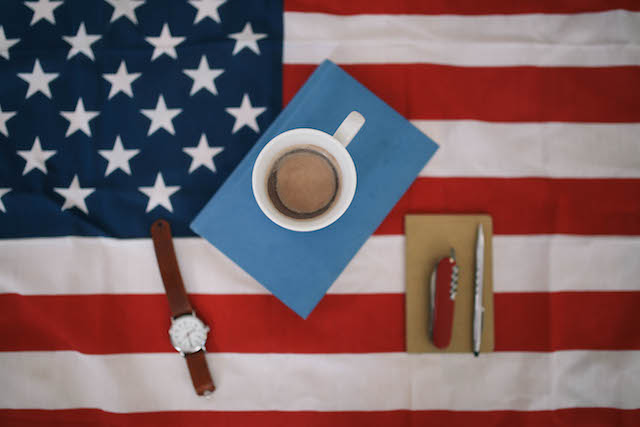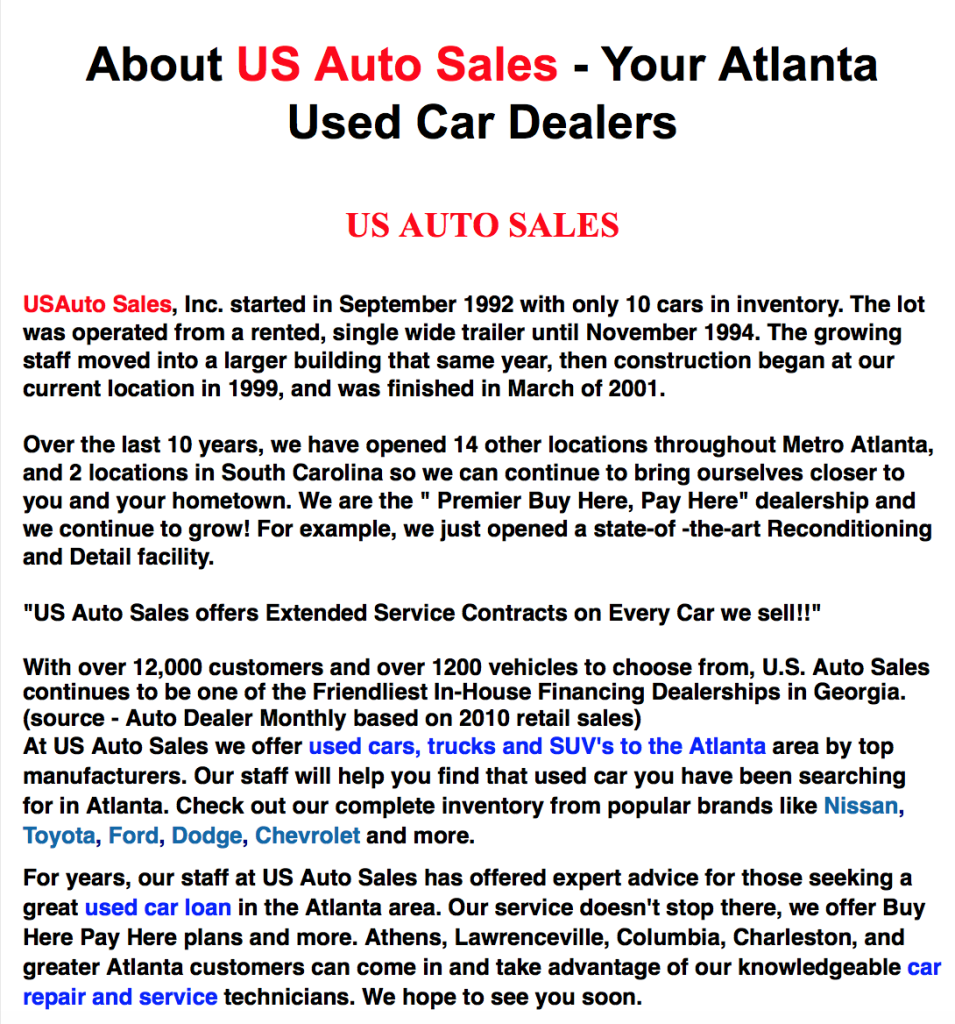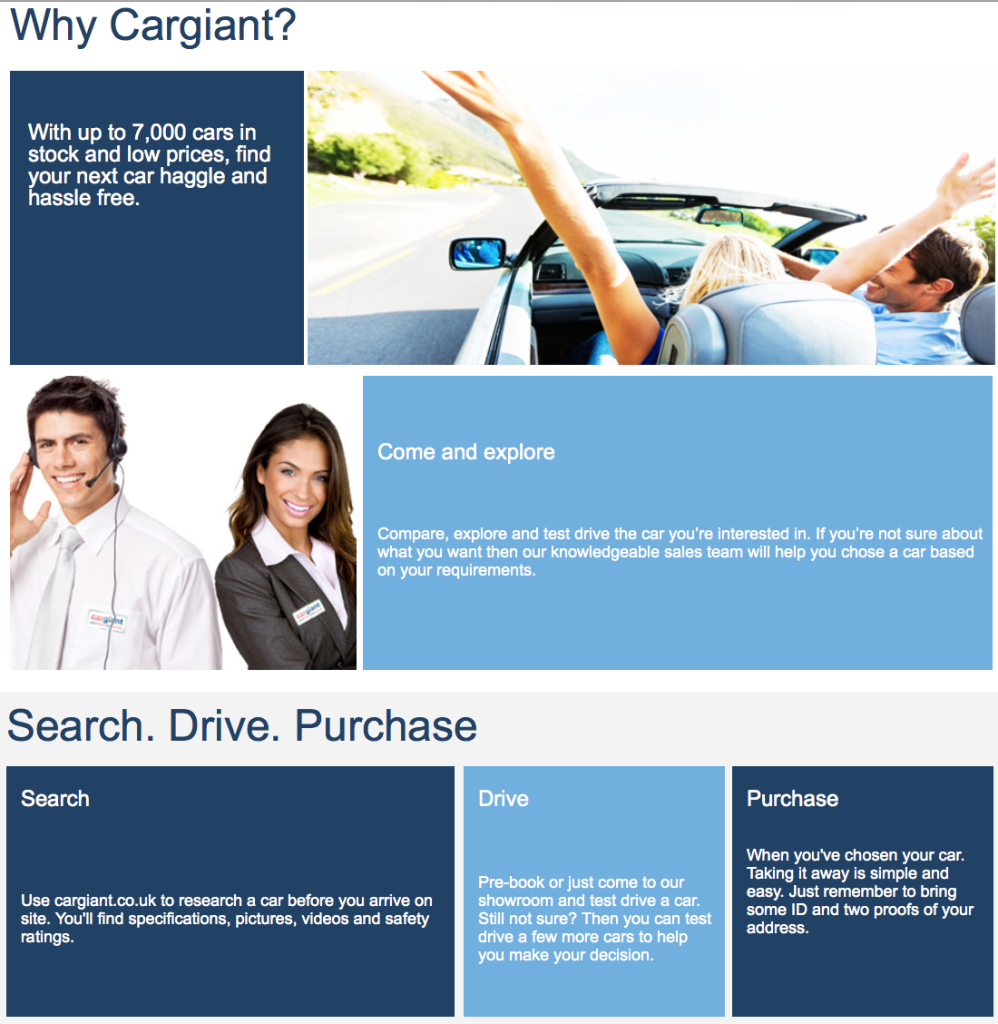As a copywriter, I’m all too aware of the differences between British and US English. The various spelling differences and the often confusing grammar dissimilarities can be a nightmare, especially when you’re crafting copy for audiences on both sides of the pond.
Thanks to the internet, we’re all aware of these differences and can easily adapt copy to an overseas audience with a few quick spelling and grammar changes.
However, simple language differences aren’t the only thing separating the US and UK. We might share a common tongue, but we have vastly different preferences when it comes to selling and being sold to.
How does region tone and advertising approach impact your conversions, and will a tone of voice that resonates well with a US audience tempt a British reader into buying your product, or signing up for your service?

Photo Credit: Death to the Stock Photo
The Most Important Aspect for Copywriting
Most business owners I speak to usually have one of two opinions on what makes a great copywriter. The most prevalent of the two is the belief that a copywriter needs to be creative, a term that is as confusing as it is unquantifiable. The others believe that to create compelling copy a writer needs to be, above all else, persuasive.
Personally, I have a different opinion. To me, whilst creativity and persuasiveness are definitely key traits they are secondary to, and indeed rely on a third factor. To create compelling copy and increase your conversions you need to thoroughly research and understand your target audience. You need to know what they think of your product, the language they use to describe it as well as their overall wants and needs.
It’s not an unpopular opinion by any means. Scroll through any conversion optimization or copywriting site and you’ll find tons of articles on how to better understand your audience and tailor your message to suit them.
Joanna Wiebe of Copyhackers created a great article outlining exactly how useful it can be. After searching through customer reviews and opinions, she discovered a USP that managed to increase the CTR of a single landing page by over 400%!
Understanding your audience shouldn’t be a new discovery to any business owner or copywriter, however, the focus for audience research often extends only so far as their likes, dislikes and opinions. Why aren’t we focusing on the the elements of our personalities that make us who we are? The deep, ingrained traits that constitute our cultural identity.
Your opinions are subject to change, but no matter what your take on a certain product or service you’ll always be a product of the culture in which you were raised, and that’s got to count for something when it comes to creating high converting copy.
What’s the Difference Between Me and You?
For the sake of brevity, I’m going to focus on the US and UK as these are the largest target markets for English language marketing efforts (sorry Australia and NZ!). It also helps that I’m a Brit who writes primarily for American clients.
Despite sharing a common language, there’s a marked difference between how a British and American audience react to sales pitches and advertisements.
Generally speaking, America takes a far more “in your face” approach with its advertising. You’re introduced to the product very early in marketing materials, and are bombarded with bold claims and incredible benefits that could be yours. There’s a lot of hype around the product or service, and it’s very much a hard sell approach.
There’s an apparent pride in the art of selling in America; advertisers are doing you a favor by presenting you with a highly beneficial product or service. It’s less creative and more persuasive.
The UK, on the other hand, is much more subdued. We’re risk averse and far more skeptical and disbelieving. We’re peculiarly often not concerned with the product benefits, and instead worry over the cost or potential downfalls of switching to whatever’s being advertised.
Salesmen aren’t viewed with a great deal of respect, either. Few Brits see salesmen as providers of valuable services that help in our day to day lives, instead viewing them as a nuisance who should be grateful for any time and attention we give them.
Our disdain for salesman and a dislike for being sold to makes the direct sales method less effective, instead we need to be wooed with a compelling story that dispels the fear and destroys our last minute resistance to purchase, all without us even realizing.
Whilst America wants direct, persuasive copy, the UK prefers to hide its sales motives under a mask of creativity, a fact well demonstrated through our different approaches to television advertising.
Companies spend huge amounts of time and money on creating compelling TV commercials, and whilst it’s difficult to accurately judge their conversion rates, they’re a great indicator of the tone and approach that works within that region.
Below I’ve included two TV commercials for the same brand. The first is one of the most successful UK TV commercials in history, whilst the second is a relatively recent yet well received American commercial.
I’ve not included the brand name as I want to see how long it takes you to guess during the first video (try not to cheat by looking at the title.)
https://www.youtube.com/watch?v=rx0MRawkrj4
So who guessed the brand before the reveal at the end?
In the American commercial, you see the Guinness brand within the first five seconds. You’ve then got a pint of the black stuff as the focal point for every subsequent scene. In the UK, we weren’t shown the product until the very end of the commercial instead left to focus on the story of the surfer and his wait.
Despite the American commercial being noticeably less salesy than its auto or medicinal counterparts, it still refuses to let an opportunity to showcase the product slip by. Every scene after the first five seconds has a pint of the black stuff as the focal point. There’s zero chance of not understanding what product’s being advertised when it’s the center piece of nearly every scene.
In stark contrast, the UK commercial barely even mentions the product, it’s a commercial that focuses 90% of it’s time to telling the story. You could most likely switch out the last 20 seconds for any number of different product. It doesn’t feel salesy at all, instead it feels like the opening to a movie or TV show.
There’s also a resounding difference in the ending tagline between the two. The UK ad tackles the negative thought many might have when ordering a pint of Guinness, that being its comparatively long pour time. Knowing that folk in the UK are often a pessimistic bunch and might complain about having to wait for their pint, the copywriter decided to tackle any negativity with the tagline, ‘Good things come to those who…’
The American commercial, on the other hand is far more positive, using the patriotic nature of the country and implying that choosing Guinness is a testament to good character.
The UK doesn’t push the product too much and focuses on dispelling any negatives whereas the US focuses primarily on the product and a benefit of you choosing it over its competitors.
What About Written Copy?
The TV commercials give a great indication of the method and tone in advertising that works on either side of the atlantic, but how can we adapt that to written copy?
It’s no secret that advertising in the US is far more brash and aggressive. TV commercial breaks are more frequent, there’s a greater density of billboards within cities and celebrity endorsements are plentiful. Being direct isn’t considered detrimental to your campaign and in fact works in your favor, just take a look at the amount of information about the product most ads communicate to their audience.
The Guinness commercial (albeit somewhat tame compared to other US commercials) shows that it’s not a problem to repeatedly remind your prospect about the service you’re offering. You also shouldn’t be afraid to embellish and exaggerate when explaining your product. Guinness isn’t really a testament to good character, it’s nothing more than an alcoholic beverage, but communicating such grandiose thoughts can help to increase sales.
In the US, hype is a benefit. Remind your prospects why you’re the best and do it frequently.
Unfortunately, the same can’t be said of the UK. We hate the idea of a hard sell and often pretentiously look down on the more positive and hyped-up use of language in the US.
Take the below Amazon review I found whilst researching a book called Hey, Whipple, Squeeze This. It speaks volumes about the British mindset and opinion of the more direct, and hyped-up American-style advertising.
If you’re marketing to a British (or even European) audience, remember that modesty goes a long way.
As I’ve already mentioned, we’re skeptical. Many view hyperbole not as justifiable bragging rights, but as exaggeration aimed at covering up shortcomings which ultimately damages your credibility.
We’re not the outgoing, spontaneous friend who’s all about having a great experience and getting the most out of life. We’re the introverted, quiet friend who you deftly lead to the desired decision allowing them to believe it was reached without any influence on your part.
Be careful not to overuse hyperbole and grandiose terms such as ‘amazing’ product, or ‘incredible’ service in your marketing. You need to believe in your brand, but remember to stay modest and try to come across with a quiet confidence.
Let’s See it in Action
Theory is all well and good, but we’re not going to fully understand the differences unless we see it in action.
Knowing that auto dealership marketing is a huge area for marketers (especially in the US), I headed over to Google, typed in ‘US auto dealership’ and ‘UK car dealership’ and clicked through to the top result for each.
Instead of checking the site home pages I headed to the about page. About pages are often the most frequented of a site making them the ideal place to exercise a little direct response copywriting to persuade your customers that you’re the best choice.
Here’s how the pages look.
As you can see, the US site is full of text explaining the company story and extolling the values and benefits of purchasing from this dealership.
There’s a lot of established direct response rules being utilized in the form of typography and language. The first word of the main body is the name of the brand, it’s also in bright red. There’s plenty of power words that would resonate well with their target audience and phrases that improve your image of them.
It’s in your face and attempts to force a positive opinion of their brand upon you, a very different approach to the UK site.
In contrast the second site is far less persuasive and has taken a very minimalistic approach to the information they provide. They’re simply telling you of the products they have and the services they provide (none of the boxes are clickable or lead to another page). There’s no pushy or sales text, it’s very much ‘we have these products and provide these services, check us out if you want.’
Personally I think both sites could do with a little overhaul of their copy but it’s a great example of the different kinds of copy (or lack thereof) that companies on the first page of Google utilize.
Do Culture Differences Really Matter?
I’ve spoken to conversion rate optimizers who will test everything down to the color of site buttons and the thickness of text. If we’re willing to test and amend small aesthetic components of a site to increase conversions then yes, the fundamental tone of your copy definitely matters.
In an ideal world you’d have your copy optimized for every single region you operate within, but that’s either a huge undertaking for yourself or a hefty pay packet for your copywriter.
If you only have the time to create one campaign I’d recommend adopting a more aggressive, American style of advertisement.
Why?
For one, the US has a much larger population and tailoring your marketing to your most prominent demographic is just good business. Furthermore, thanks to America’s many entertainment exports the rest of the world has a good understanding of the way things work in the US.
Your overly brash copy might dissuade some overseas prospects but you’ll have at least a few who understand it’s the American way, far more than if you employed a more British tone in your US materials.
Of course, you can always take out the hyperbolic terms and polish what’s left to see how well your copy performs on European soil.
Have a look at the copy you’re currently using. Does it conform to the aggressive “buy from me, I’m the best” American style, or is it a more subdued British method that relies more on suggestion over persuasion? If it falls into neither, how is it working for you, and are you seeing the conversions you’d like to?









